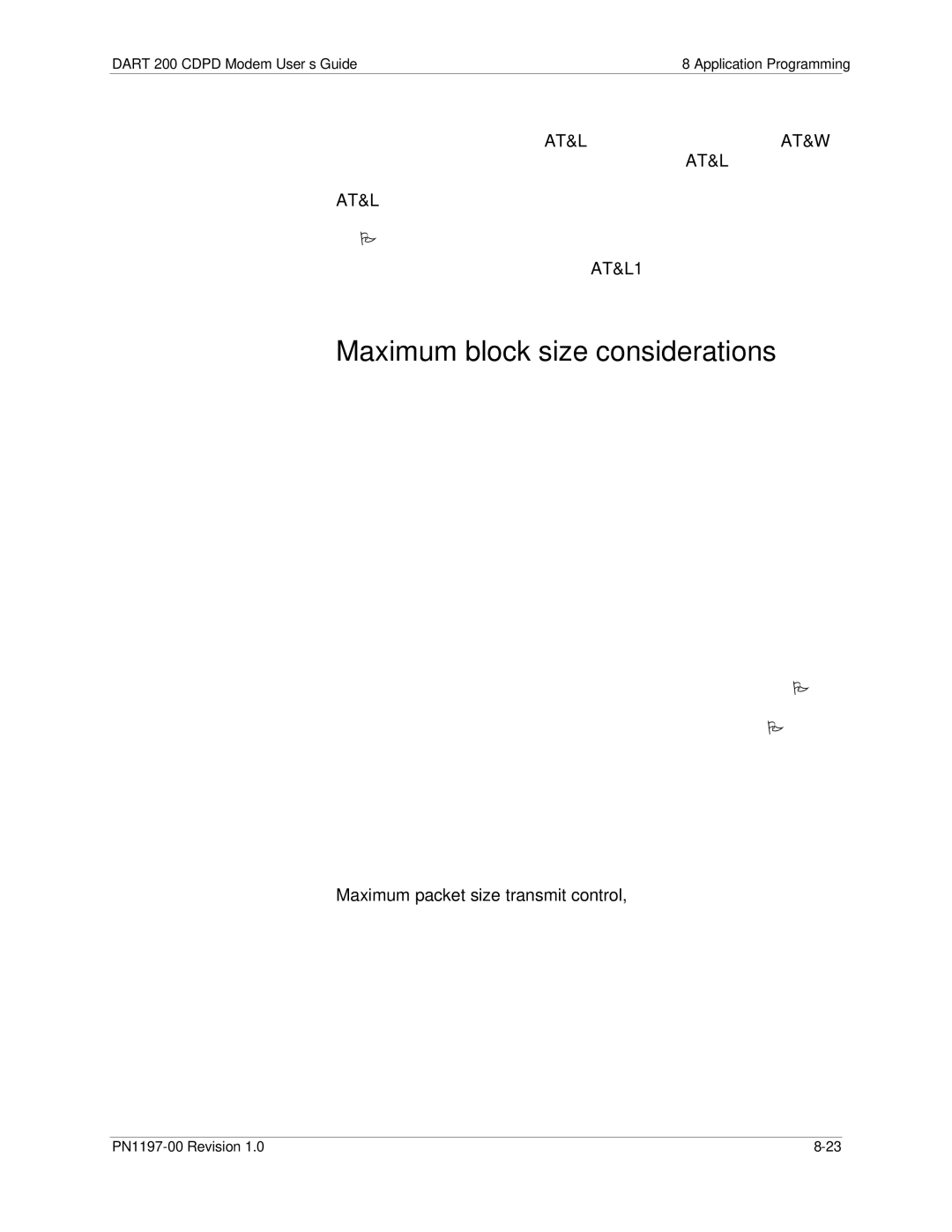DART 200 CDPD Modem User’s Guide | 8 Application Programming |
If the DART 200 is attached to a device that operates at a different speed or data format, an appropriate AT&L command, followed by an AT&W (to save the change) must be issued. Executing the AT&L command disables autobaud and fixes (locks) the DART 200 to settings in the AT&L command. Available bauds are 300, 1200, 2400, 4800, 9600, and 19.2K. Regardless of the baud selected for the communications port, the CDPD airlink speed is fixed at 19,200 bps.
Autobaud can be reactivated with an AT&L1 command.
Maximum block size considerations
To maximize data throughput, most communications application designers use the maximum blocksize compatible with good performance. On land lines this number is usually 1024 bytes or larger. If data blocks are too large, the likelihood of one dropping bits and having to retransmit increases. If this occurs, the overall message transmission times increase proportionately. If blocks are too small, the likelihood of dropping bits is much smaller, but delays associated with transmitting many more blocks increases overall transmission time. Better quality lines decrease the likelihood of dropping bits, and faster lines decrease delay times; however, the tradeoff always remains.
In a wireless environment the same tradeoffs apply. However, the speed and quality is not high by landline standards, so maximum blocksizes are necessarily smaller. The real advantage of wireless is simply in being wireless.
Another consideration in the CDPD environment, is that there is a charge for the number of bytes transferred. Since the headers are a fixed size and relatively large (40 for TCP, 28 for UDP), there is customer pressure to minimize the number of blocks (make them larger) to reduce the cost. This can be
Data packets above 536 bytes are likely to be fragmented; a process that on average adds to the overhead associated with larger blocks. Refer to Maximum packet size transmit control, p.
Start with a blocksize of 256 bytes. However, this parameter is a function of both the application and the local CDPD environment. To optimize data transfer a trial and error approach varying the blocksize is recommended, for example:
|
